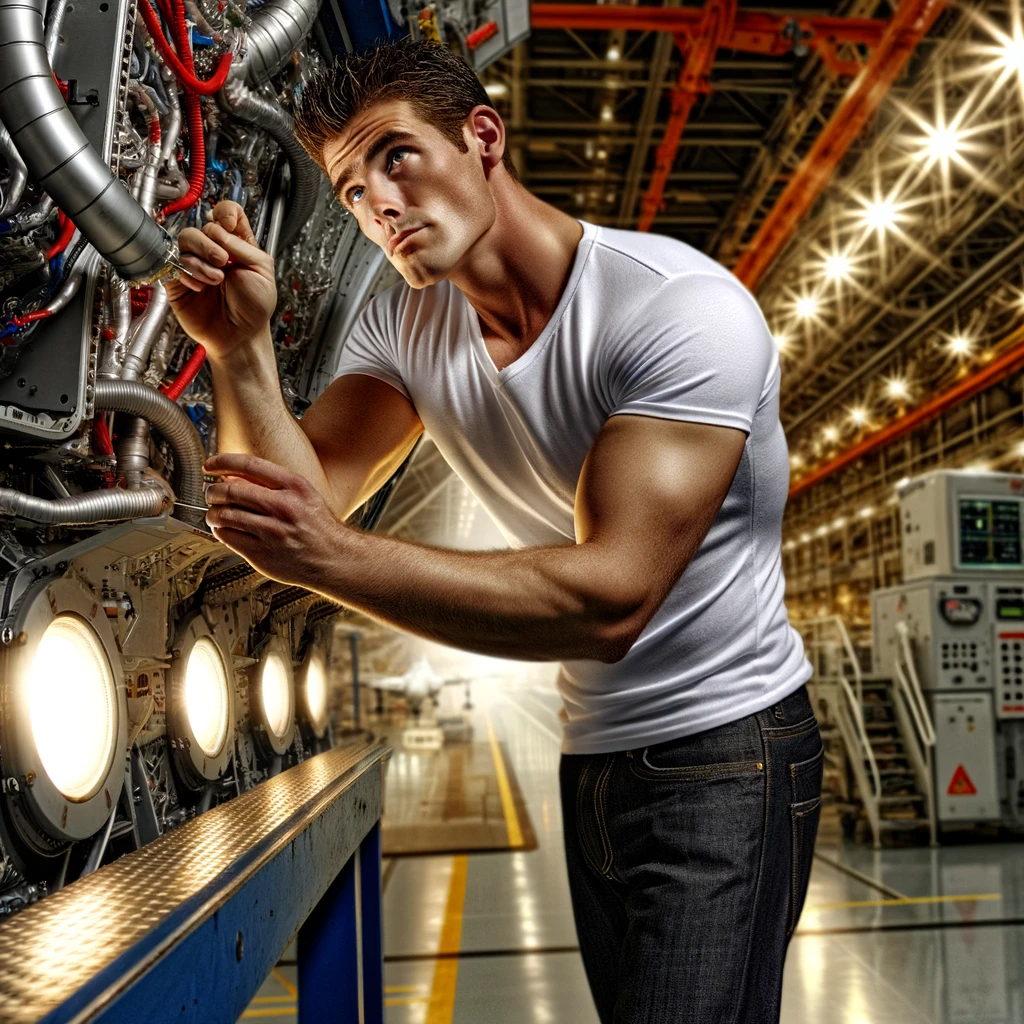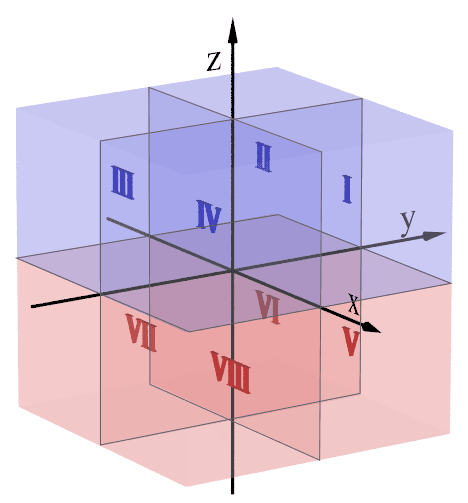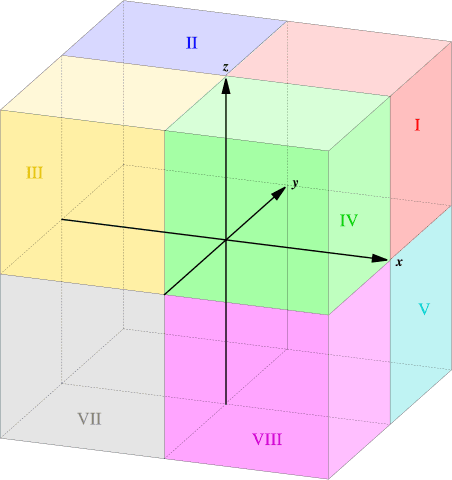The 8 Octants of the 3-Dimensional Coordinate System

Applying the complete XSE method continually through Luxxacation is designed to bring the system constructively into only one of the 8 octants, the only one of the 8 where the highest value can be achieved. All other 7 of the 8 octants contain negative numbers (see above). Therefore, in order for the Systems Engineer to perform optimally or to optimize a system (taking into consideration any given limitations) the system must always score in the first octant. For positive vs. negative valuation within XSE’s axiomatic system, see the XSE Axiomatic System.
Points on the 3-D coordinate system where green is + and red is -. The only point that registers as +++ is 13 in the upper right hand corner below:
Piesk, T. 2019. “Cube with balanced ternary labels.” Wikimedia Commons. <https://commons.wikimedia.org/wiki/File:Cube_with_balanced_ternary_labels.svg>.
The 8 octants shown labeled with Roman Numerals where I is the only octant that would be +++, as shown below:

Svjo. 2013. “Octants.” Wikimedia Commons. <https://commons.wikimedia.org/w/index.php?curid=26958867>.
Below the 8 octants are shown as individually colored blocks, where the only block that would be +++ is the red/pink cube: I.

Rohwedder, Lars H. 2007. “Numbers of the octants I to VIII of the 3D cartesian coordinate system.” Wikimedia Commons. <https://commons.wikimedia.org/w/index.php?curid=2772588>.

You are the Sustaining Systems Engineer.
You are the System of Interest.

The key to accelerating advancement: take a step back, go beyond the typical constraints, and enter the XSE Vantage Point for an astronomical view that transcends time and is all-encompassing of the 4th dimension. Pierce through the exterior of your system of interest, what is it made of? What is its substance? Is it strong? Or is it weak and fragmented, unable to hold up to even the first test? This will predominantly be determined by the factors related to the other 3 dimensions’ integration into the SOI.
